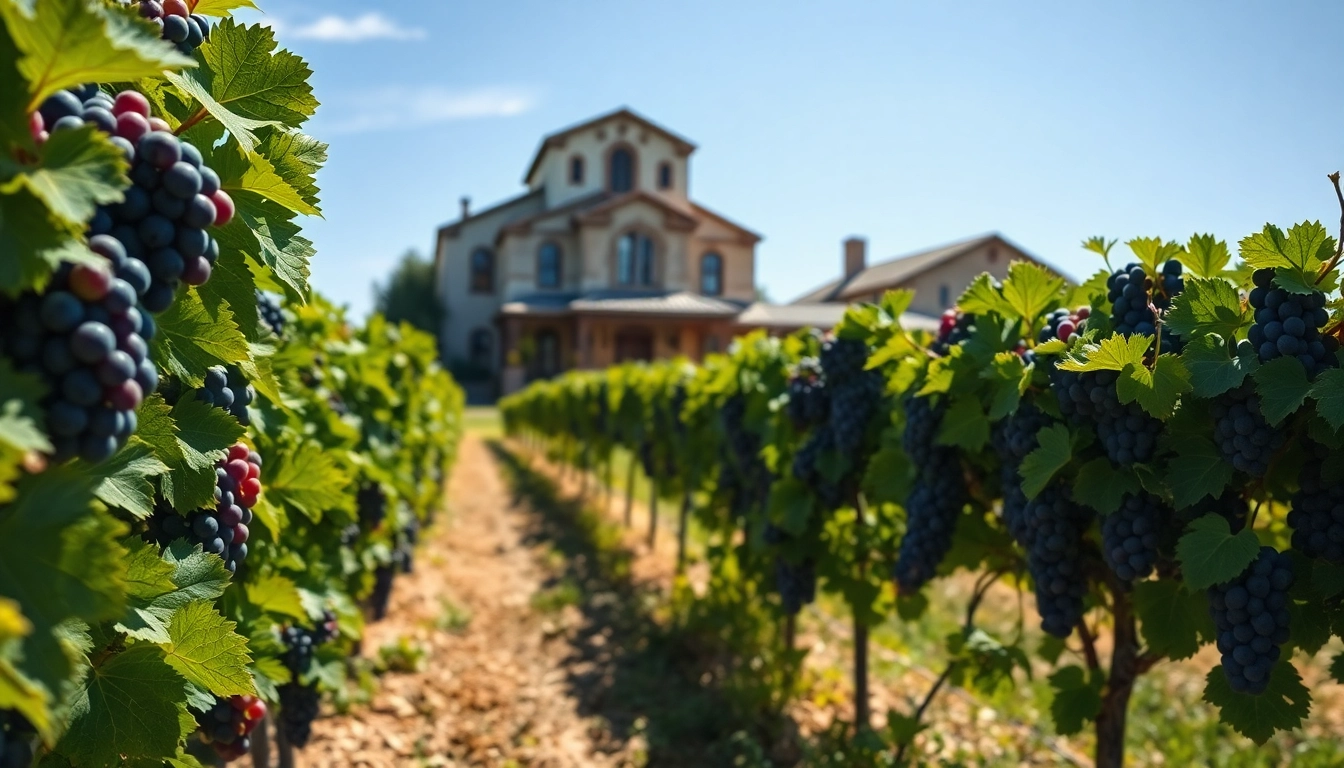
Understanding Sacramento Wineries
The region surrounding Sacramento is known for its unique and vibrant winery scene, offering visitors a diverse range of wine-tasting experiences that are difficult to match elsewhere. With over 200 wineries to explore, Sacramento Wineries promises not just superb wine but also stunning scenery, warm hospitality, and a deep connection with the local community. This article delves into the various aspects of Sacramento’s wineries, from their historical roots to sustainable practices, ensuring an enriching experience for all visitors.
The History and Growth of Sacramento Wineries
The history of Sacramento wineries dates back to the mid-19th century when European settlers introduced viniculture to California. The combination of California’s diverse climate, fertile soils, and the Sacramento Valley’s unique geography created a perfect environment for wine grapes. Notably, the region is part of the larger California Central Valley, known as the “Farm-to-Fork” capital, where agriculture thrives.
As more settlers arrived, particularly during the Gold Rush, the demand for wine increased. Vineyards began to flourish, with early pioneers establishing some of the first wineries in the area. Fast forward to the present day, and Sacramento is now home to a booming wine industry, complete with an expanding array of wineries ranging from large-scale operations to family-owned boutique vineyards.
Geographical Highlights of Sacramento Wineries
The geographical diversity of the Sacramento region enhances its wine production capabilities. Sacramento Valley is characterized by its beautiful rolling hills, rich alluvial soils, and a Mediterranean climate that offers hot summers and mild winters, ideal for grape growing. The region benefits from a microclimate that varies amongst its vineyards, contributing to a wide array of wine varietals.
The proximity to the Sierra Nevada foothills also influences the local viticulture. The elevation variation allows for different grape maturation processes, giving rise to distinct flavor profiles across the wines produced. The Napa and Sonoma regions are just a short drive away, adding to the allure and competitive edge of Sacramento, as winemakers in the area are constantly innovating and experimenting with new techniques and grape varietals.
Different Types of Wineries in Sacramento
Sacramento’s wineries can be broadly categorized into several types, each offering unique experiences:
- Boutique Wineries: These small, family-owned wineries often focus on artisan production techniques and niche varietals. Their intimate settings allow visitors to engage directly with the winemakers.
- Farm Wineries: Integrating farming with winemaking, these wineries often grow their own grapes and provide a farm-to-table experience with on-site dining options featuring local ingredients.
- Urban Wineries: Located within the city limits of Sacramento, these wineries bring the wine experience closer to urban dwellers and tourists, often accompanied by tasting rooms that double as social spaces.
- Event Wineries: With scenic views and facilities designed for gatherings, these wineries often host weddings and corporate events, creating unforgettable memories in a beautiful setting.
Activities at Sacramento Wineries
Wine Tasting Experiences at Sacramento Wineries
Wine tasting is undoubtedly at the heart of the Sacramento winery experience. Visitors can expect to sample a range of wines, from robust reds to crisp whites and exquisite dessert wines, each representative of the region’s terroir. Many wineries offer guided tours that explain the winemaking process, from grape varieties to fermentation methods. These tours provide attendees with a deeper understanding of wine appreciation.
Interactive tastings often take place in picturesque settings, allowing guests to savor wine while surrounded by vineyards. Some wineries even offer themed tastings, such as vertical tastings of the same wine from different vintages, which provide intriguing insights into how a wine evolves over the years.
Events and Festivals Celebrating Sacramento Wineries
Throughout the year, Sacramento wineries host a variety of events and festivals that celebrate local wine culture. Harvest festivals in the fall mark the end of the grape-picking season and are often accompanied by live music, food pairings, and of course, plenty of wine tastings. These events are perfect for tourists seeking a vibrant atmosphere and a chance to mingle with locals.
Moreover, many wineries also host educational workshops where enthusiasts can learn more about wine pairing, tasting techniques, and even winemaking processes. Seasonal events often highlight specific varietals, introducing visitors to unique wines that may not be found elsewhere.
Dining Options Available at Sacramento Wineries
Many Sacramento wineries take the experience a step further by offering on-site dining options. These restaurants often feature menus meticulously crafted to pair seamlessly with the wines being produced on-site. Visitors can enjoy gourmet meals that showcase local ingredients, enhancing the overall sensory experience of the tasting.
Wine and food pairings can range from simple charcuterie boards featuring local cheeses and cured meats to elaborate multi-course meals. Some wineries also offer cooking classes and food and wine pairing workshops, turning a day of tastings into an interactive and educational experience.
Tips for Visiting Sacramento Wineries
Best Times of Year to Visit Sacramento Wineries
The best time to visit Sacramento wineries is during the grape harvest, which typically occurs from late summer through early autumn. This is often when you can participate in the most vibrant festivities, including harvest festivals and special tastings. Spring is also a wonderful time when the vineyards come alive with blooming blossoms and milder weather, creating picturesque views.
However, visiting in the quieter winter months can also be rewarding. Many wineries offer reduced crowds, allowing for a more intimate tasting experience. Special winter events, such as holiday tastings or new vintage releases, can enhance the allure of winter visits.
How to Plan Your Day at Sacramento Wineries
Planning a day at Sacramento wineries can be thoroughly enjoyable with a little foresight. Consider the following steps:
- Choose Your Wineries: Prioritize wineries based on your wine preferences, desired activities, and any specific events happening on the day of your visit.
- Make Reservations: Many wineries require or recommend reservations for tastings, especially on weekends. It’s advisable to check their websites or call ahead.
- Plan for Meals: If dining on-site, confirm restaurant hours and make reservations if necessary. It’s a good idea to have a meal between tastings for a better experience.
- Designate a Driver: For safety, especially if you’re planning to visit multiple wineries, consider arranging for a designated driver or utilize local transportation services.
Transportation Options to Sacramento Wineries
Getting to Sacramento wineries is quite convenient, with a variety of transportation options available. If you’re driving, Highway 50 and I-5 offer quick access from downtown Sacramento to various winery locations. However, for those who prefer not to drive, numerous guided wine tours operate within the region, providing transportation to multiple wineries while educating guests along the way.
Additionally, ride-sharing services are widely available, making it easier for groups to explore without worrying about parking or driving. Some wineries even offer shuttle services or partnerships with local hotels for convenient transportation.
Pairing Wines with Local Cuisine at Sacramento Wineries
Local Dishes That Complement Sacramento Wineries
One of the unique features of Sacramento wineries is the emphasis on local cuisine. The rich agricultural heritage of the region allows wineries to partner with local farms for a true farm-to-table experience. Signature dishes may include seasonal produce, artisanal cheeses, and freshly caught fish, all thoughtfully paired with the region’s wines.
Signature items often include items like grilled vegetable skewers, locally sourced meats, and artisan bread. These options are frequently made available at winery restaurants or during special tasting events, providing an all-encompassing culinary experience.
Cheese and Wine Pairings: Tips from Sacramento Wineries
Wine and cheese pairings are a classic combination. When visiting Sacramento wineries, consider trying the following pairings:
- Chardonnay with Brie: The creaminess of Brie balances the crisp acidity of Chardonnay, creating a harmonious pairing.
- Cabernet Sauvignon with Aged Cheddar: The robust tannins in Cabernet complement the sharpness of aged cheddar.
- Pinot Noir with Goat Cheese: The light body and earthy tones of Pinot Noir pair beautifully with the tangy flavor of goat cheese.
Wineries often provide tasting notes that suggest the best pairings for their wines, enhancing the overall tasting experience and education.
Exploring Regional Ingredients Featured in Sacramento Wineries
Many Sacramento wineries prioritize the use of regional ingredients in their culinary offerings. The Farm-to-Fork movement, which highlights locally sourced foods, is at the forefront of wine pairing menus in the area. By integrating local ingredients like abundant vegetables, artisan breads, and meats, wineries craft meals that truly reflect the flavors of Sacramento.
Using local produce not only supports regional farmers but also ensures fresh and vibrant flavors that complement the wines produced in the area. Some wineries even host events focused on specific local ingredients, providing opportunities for guests to learn more about sustainable agriculture and cooking practices.
Exploring Sustainable Practices at Sacramento Wineries
Organic and Biodynamic Wineries in Sacramento
As environmental concerns grow globally, Sacramento wineries are increasingly adopting organic and biodynamic practices. Organic wineries refrain from using synthetic chemicals, prioritizing natural processes that promote soil health and biodiversity. Biodynamic wineries take this a step further, following sustainable farming techniques that incorporate lunar cycles and compost preparations.
This commitment to organic farming not only benefits the environment but also results in richer, more flavorful wines. Visitors can often take tours of these vineyards to see sustainable practices in action, learning about everything from cover cropping to natural pest control.
Community Initiatives by Sacramento Wineries
Beyond their vineyards, many Sacramento wineries are deeply involved in their communities. Initiatives often include hosting local farmers’ markets, participating in fundraisers for local charities, and collaborating with local restaurants to promote regional cuisine.
Some wineries have adopted educational initiatives where they host workshops on sustainable farming and winemaking practices, aiming to foster a community of wine lovers that values ecological responsibility. These programs may help visitors appreciate the importance of supporting local businesses and sustainable practices.
Future Trends in Sacramento Wineries
The future of Sacramento wineries looks promising, with ongoing trends pointing towards increased sustainability, innovation in winemaking practices, and technology integration. Many wineries are experimenting with new viticultural methods, such as precision agriculture techniques, which use technology to monitor vineyard health and optimize production.
Additionally, the region’s wineries are becoming more inclusive and aware of consumer preferences, including expanding their offerings to include low-alcohol and non-alcoholic wines. This could attract a wider audience and enhance the visitor experience at Sacramento wineries, making it a dynamic and evolving destination for wine lovers.






